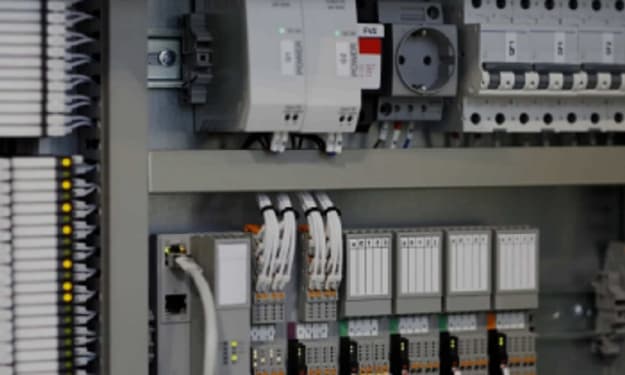Understanding Transistors: The Heart of Modern Electronics
Transistors are fundamental components in modern electronics, serving as the building blocks for countless devices we use daily. From smartphones to computers, and even household appliances, transistors play a crucial role in the functionality and efficiency of electronic circuits.

Introduction
Transistors are fundamental components in modern electronics, serving as the building blocks for countless devices we use daily. From smartphones to computers, and even household appliances, transistors play a crucial role in the functionality and efficiency of electronic circuits. This article delves into the basics of transistors, their types, working principles, and their applications in the world of electronics.
What is a Transistor?
A transistor is a semiconductor device used to amplify or switch electronic signals and electrical power. It consists of three layers of semiconductor material, each capable of carrying a current. The three layers are known as the emitter, base, and collector. Depending on the arrangement of these layers, transistors are classified into two main types: NPN and PNP transistors.
Types of Transistors
NPN Transistor
In an NPN transistor, the layers are arranged as follows: a layer of N-type semiconductor material (emitter), a layer of P-type material (base), and another layer of N-type material (collector). When a positive voltage is applied to the base relative to the emitter, it allows current to flow from the collector to the emitter.
PNP Transistor
In contrast, a PNP transistor has a layer of P-type material (emitter), a layer of N-type material (base), and another layer of P-type material (collector). When a negative voltage is applied to the base relative to the emitter, it allows current to flow from the emitter to the collector.
How Do Transistors Work?
Transistors operate as either amplifiers or switches by controlling the flow of electrical current through their layers. The operation is based on the concept of electron flow in semiconductors.
Amplification: In amplifier mode, a small input current applied to the base of the transistor controls a larger current flowing between the collector and emitter. This principle is widely used in audio and radio frequency amplification.
Switching: In switch mode, the transistor can be turned on or off by applying appropriate voltage to the base. When the base voltage is sufficient, it allows current to flow from the collector to the emitter, turning the switch on. When the base voltage is removed, the current flow stops, turning the switch off. This operation is crucial in digital circuits, such as those in microprocessors and memory chips.
Applications of Transistors
Transistors have a wide range of applications across various fields, including:
Computers and Microprocessors: Transistors are integral to the functioning of CPUs, memory chips, and other digital circuits.
Amplifiers: Used in audio, radio, and television circuits to amplify signals.
Switches: Employed in power supplies, signal modulation, and switching applications.
Oscillators: Utilized in generating frequency signals in communication devices.
Sensors: Found in various sensing applications, from temperature to light sensors.
Common Signs of a Faulty Transistor
No Output Signal
One of the most evident signs of a faulty transistor is the absence of an output signal. If the circuit is not delivering the expected signal or power, the transistor could be at fault.
Overheating
Transistors that overheat quickly or feel excessively hot to the touch could be damaged. Overheating often indicates an internal short circuit or excessive current flow through the transistor.
Inconsistent Performance
A damaged transistor may cause the circuit to work intermittently, leading to inconsistent performance. This could manifest as fluctuations in signal strength or erratic operation of the device.
Burn Marks or Physical Damage
Visual inspection might reveal burn marks, cracks, or other physical damage on the transistor. This is a clear indication that the transistor has been subjected to excessive stress or voltage.
Abnormal Voltage Readings
Using a multimeter to measure the voltages at the transistor's terminals (emitter, base, and collector) can reveal abnormalities. Voltage readings that deviate significantly from the expected values suggest a faulty transistor.
Troubleshooting a Faulty Transistor
Visual Inspection
Start with a visual inspection of the transistor for any obvious signs of damage, such as burn marks or physical deformities.
Check for Shorts
Use a multimeter to check for shorts between the transistor's terminals. Set the multimeter to the continuity mode and test between the emitter-base, base-collector, and emitter-collector. A short circuit in any of these paths typically indicates a faulty transistor.
Measure Resistance
Measure the resistance between the transistor's terminals. For an NPN transistor, the base-emitter and base-collector junctions should show low resistance in one direction and high resistance in the other direction. For a PNP transistor, the opposite should be true. Any deviation from these expected values suggests the transistor is damaged.
Test in Circuit
Sometimes, testing the transistor within the circuit can help identify issues. Check for proper biasing voltages and compare the behavior of the suspect transistor with a known good one in the same circuit.
Use a Transistor Tester
A dedicated transistor tester can provide a more accurate diagnosis. These devices can measure the gain, leakage, and other parameters of the transistor, providing a comprehensive assessment of its health.
Conclusion
Transistors are indispensable in the realm of electronics, providing the foundation for modern technology. Understanding their types, working principles, and applications allows us to appreciate their significance and the advancements they have brought to electronic devices. Whether in simple circuits or complex microprocessors, transistors continue to drive innovation and efficiency in the ever-evolving world of electronics.
About the Creator
Kelas Teknisi
Meet our expert in electrical power systems, renewable energy, electronics, and cutting-edge technology, who shares their extensive knowledge and experience on Kelasteknisi.com.
Enjoyed the story? Support the Creator.
Subscribe for free to receive all their stories in your feed. You could also pledge your support or give them a one-off tip, letting them know you appreciate their work.






Comments
There are no comments for this story
Be the first to respond and start the conversation.